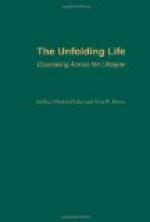There are two helpful methods of using an object with children in the Beginners’ and Primary age. The first is to explain an unfamiliar fact, or make it clear. A model of an oriental house or curios from a mission field are examples of this. The second use is to illustrate a fact. The flower is the visible expression of God’s loving care; the table, heaped high with grains and fruits and vegetables at the Thanksgiving service, teaches as no mere words could the fact of God’s provision for our need. Objects used in this way require no reasoning power to make their meaning clear. It is only a matter of perception.
The use of an object, however, in order to deduce spiritual truth therefrom for children with reasoning powers undeveloped, is a mistake. Instead of making the thought clearer to their minds it obscures it. Close examination reveals the reason for this. A child is both imaginative and literal. Through his imagination he can transform one object into another object, as we have already observed, but in this case he is asked to transform an object into an abstract idea. This he does not easily do, since such transformation is made by reason, not by imagination. Further, the spiritual teachings are drawn from the abstract idea which the object is supposed to represent, not from the object itself. Manifestly, therefore, if he does not get the idea he will not get the deductions from it. His mind does not follow beyond the point where he can understand, consequently, his thought remains with the object as it literally is.
To illustrate, take the familiar object lesson of a cup overflowing with water, used to teach the thought of God’s manifold blessings in the life. The child is asked to change the cup into the abstract thought of life, and water into the thought of blessing. This is difficult, for it involves reason and deals with resemblances which are artificial, not real. The child’s literalism, therefore, asserts itself, and the cup remains a cup and the water is still water, and while the teacher is drawing conclusions, the child is probably wondering whether her dress will get wet or how he can get a drink.
The same principle obtains in regard to certain types of blackboard illustrations. The child is asked to change a cross into suffering, a crown into victory, a red cardboard heart into life, and a picture of Jesus Christ pinned upon it into regeneration. He does not make these transformations until reason is more fully developed than in this period. Lines remain lines, cardboard is still cardboard and spiritual deductions do not reach his understanding.
The fact that an object or drawing is always interesting does not alter the principle at all, for being interested and being instructed are not necessarily equivalent terms. The lesson must always be interesting, but it must also gain entrance according to the laws of the mind to be instructive.




